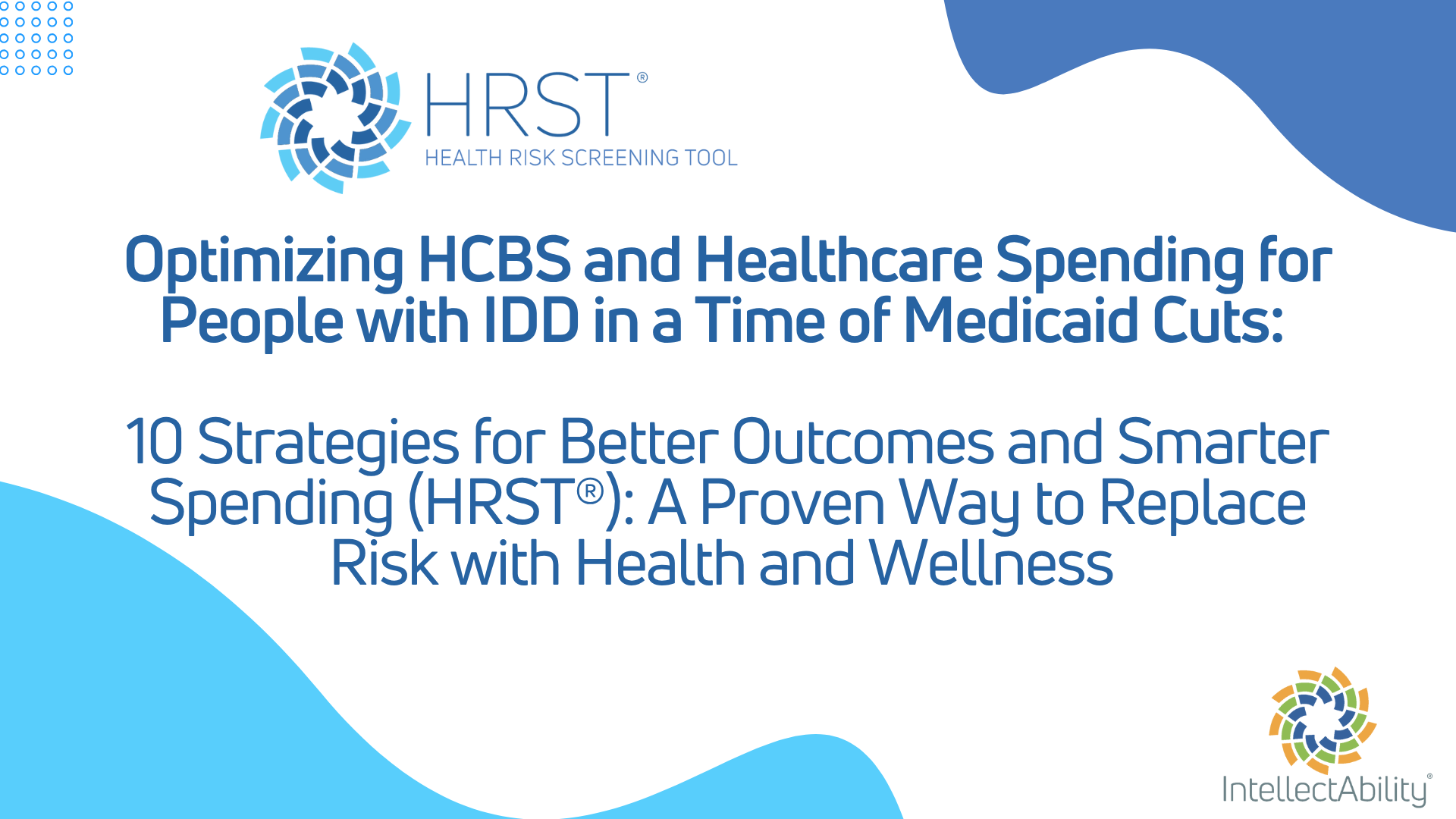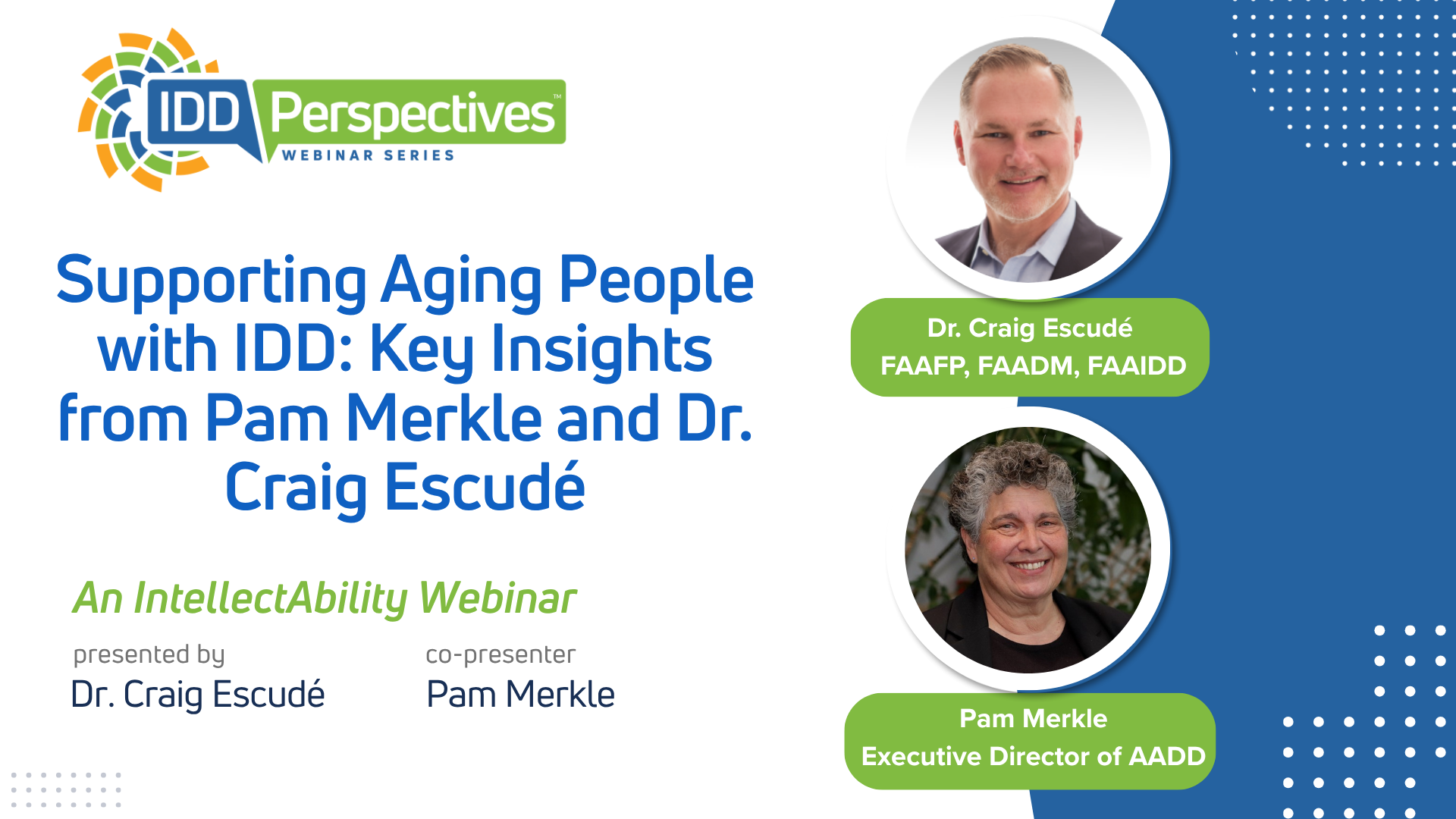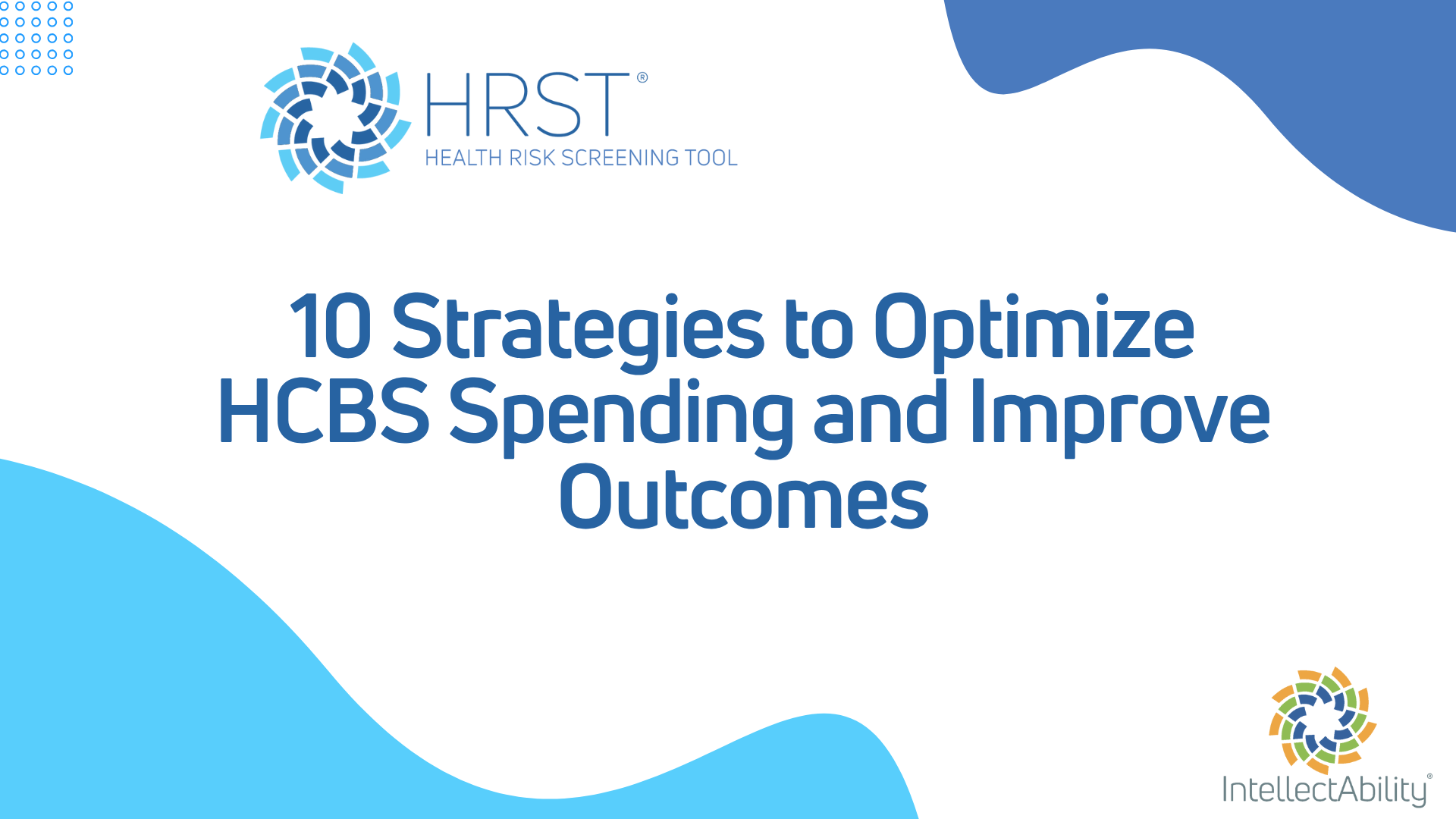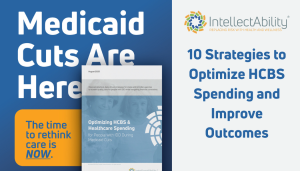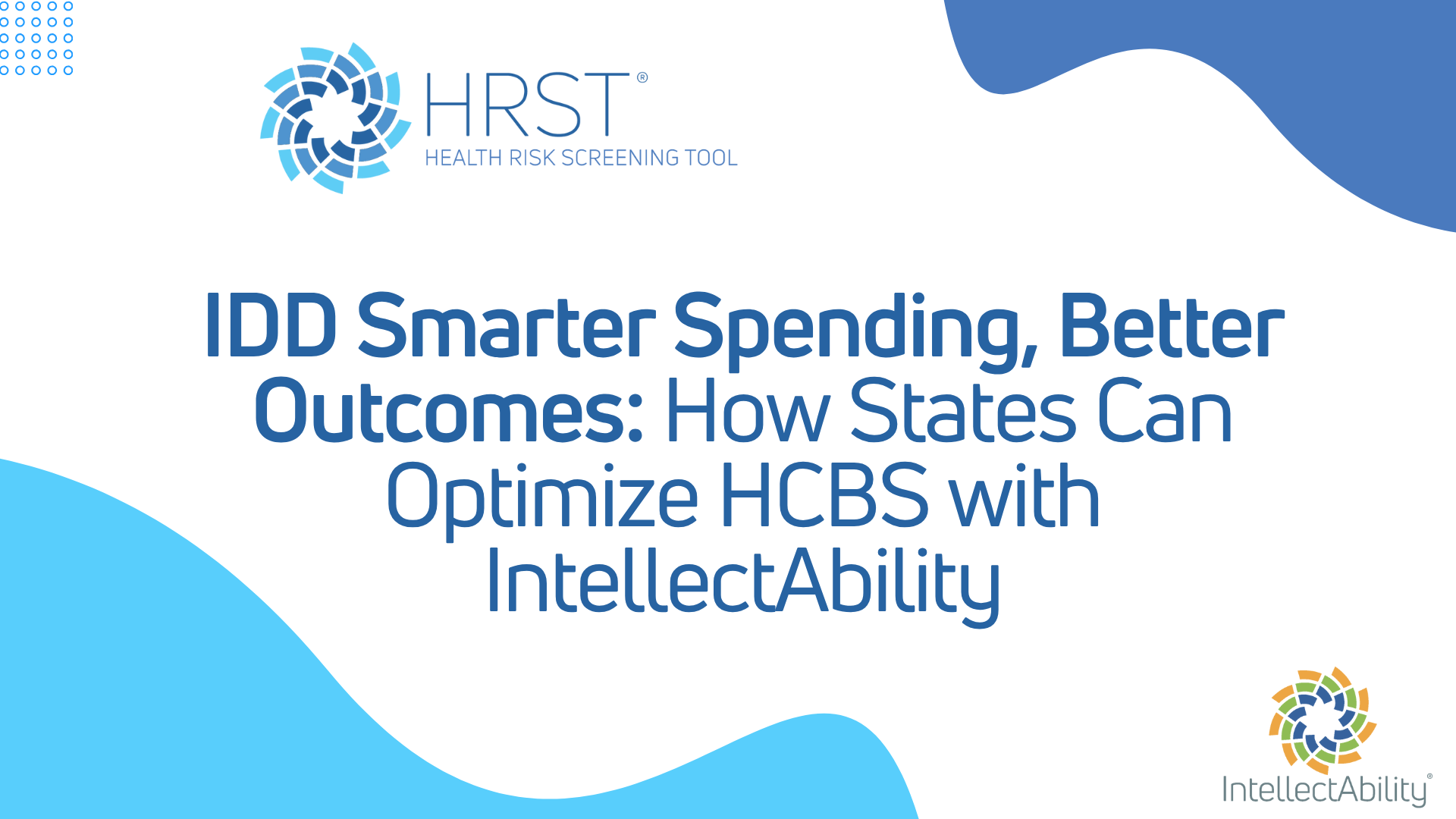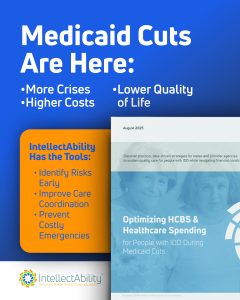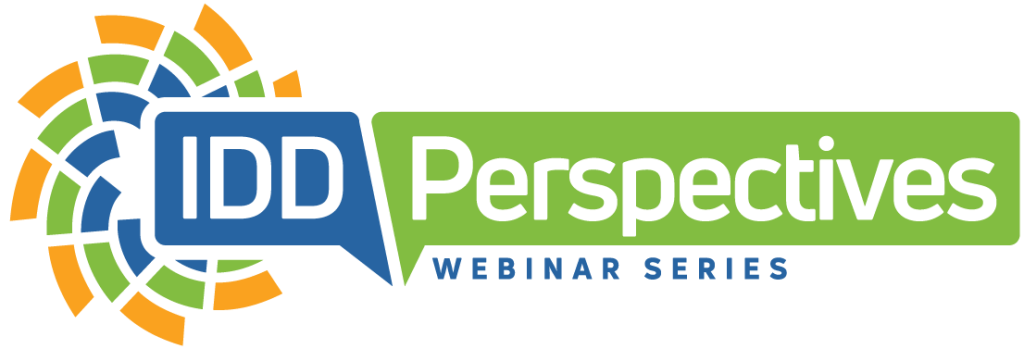Optimizing HCBS and Healthcare Spending for People with IDD in a Time of Medicaid Cuts: 10 Strategies for Better Outcomes and Smarter Spending
Optimizing HCBS and Healthcare Spending for People with IDD in a Time of Medicaid Cuts: 10 Strategies for Better Outcomes and Smarter Spending
By Aliah Farley
As states prepare for significant shifts in Medicaid funding, providers and policymakers are asking the same urgent question: How can we continue delivering high-quality services while managing tighter budgets?
The current healthcare system for people with IDD faces unique challenges, including persistent health disparities and the high prevalence of chronic conditions that often co-occur with intellectual and developmental disabilities. These issues highlight the need for improved integration and provider training to address both acute and long-term health needs.
In a recent IntellectAbility webinar, Dr. Craig Escudé, President of IntellectAbility, and Daleigh Tallent, RN, MSN, CDDN, Clinical Director, shared strategies for strengthening Home and Community-Based Services (HCBS) and healthcare for people with intellectual and developmental disabilities (IDD). Various departments at the state and organizational level are responsible for implementing person-centered initiatives and optimizing HCBS. Together, they outlined the challenges ahead and provided ten actionable strategies to improve outcomes while controlling costs.
The Medicaid Landscape in 2025
With the recent federal budget reconciliation bill, Medicaid and CHIP face projected funding reductions of nearly $1 trillion over the next decade. States will feel these impacts differently, but the ripple effects could include:
- Fewer HCBS waiver slots and longer waitlists
- Increased risk of institutionalization due to loss of community supports
- Staffing shortages and provider agency closures
- Reduced access to behavioral health services
- Increased administrative barriers, such as six-month re-verifications
- Changes in eligibility criteria that may affect who is eligible for Medicaid-funded programs and long term services
Reductions in payments to providers and changes in private insurance coverage may further limit access to care for people with intellectual and developmental disabilities (IDD), especially for specialized therapies and services not fully covered by public programs.
While these possibilities paint a concerning picture, Dr. Escudé emphasized a forward-focused approach: “I don’t like to operate by scaring people. I like to say, okay, this is where we are. These are the things that we’re looking at. So, what can we do?”
The increased risk of institutionalization is particularly concerning, as it may lead to more individuals with IDD being placed in facilities or institutions, such as Intermediate Care Facilities/Intellectual Disabilities (ICF/IID), rather than receiving community-based supports. State-supported living centers and other government-supported facilities continue to provide supported care for those with higher medical and behavioral needs, highlighting the ongoing importance of both institutional and community-based options.
Ten Strategies for Optimizing HCBS and Spending
Optimizing Home and Community-Based Services (HCBS) for people with intellectual and developmental disabilities (IDD) requires understanding their unique needs and the benefits of integrated systems. These strategies aim to improve the person’s ability to live independently and achieve better health outcomes.
- Prioritize Prevention
Early detection of health issues, especially in children, can improve outcomes by enabling timely intervention and support. For example, screening for physical disabilities or chronic conditions in children allows for early treatment and assistance, reducing suffering, preventing ER visits, and lowering costs. - Focus on High-Risk Populations
Identify high-risk persons and patients at greatest risk of health destabilization by understanding their chronic conditions, affected body systems, and social context. This helps tailor treatment, assistance, and resources to those who need them most, improving outcomes and ensuring that care is patient-centered. - Leverage Data and Predictive Tools
Use data and predictive tools across different provider types and systems to provide services more efficiently. This enables providers to understand patient needs, predict hospitalizations, and intervene early, improving care coordination and resource allocation. - Strengthen Care Coordination
Integrate medical, behavioral, mental health, and oral health supports, as well as medicine, to prevent duplication and missed needs. Addressing both physical disabilities and mental health needs brings significant benefits to persons with IDD. Healthcare providers play a key role in coordinating care and providing treatment for both acute and chronic conditions. - Employ Technology Wisely
Use telehealth, remote monitoring, and data sharing to reduce costly crises. These methods benefit persons with IDD by making healthcare more accessible, especially for those with mobility or transportation challenges. - Adopt Value-Based Payment Models
Value-based payment models incentivize stabilization and improved quality of life over service volume. These models result in less effort and more naturally integrated care planning, making it easier for providers and patients to update and implement service plans. - Invest in Workforce Training and Retention
Equip staff with IDD-specific training, teaching methods, and person-centered thinking skills to reduce turnover and improve care. Teaching staff to recognize and support the body’s health needs, including those related to physical disabilities, helps them better understand and implement person-centered thinking skills. - Reduce Reliance on High-Cost Settings
Expand crisis stabilization options and IDD-focused telehealth to prevent unnecessary hospitalizations. Support people in their own homes and communities to reduce reliance on high-cost facilities and institutional care. For example, the Texas Home Living Program (TxHmL) supports individuals with IDD living with their families or in their own homes, promoting independence and community integration. - Address Social Determinants of Health (SDOH)
Screen for food, housing, and transportation needs that drive health outcomes. Social services and community-based programs provide assistance to families and individuals, addressing social determinants of health and supporting participation in their communities. - Engage People and Families in Planning
Build truly person-centered plans that reflect what people actually need and want. Person-centered thinking skills are essential for supporting self-direction and promoting positive control in service planning. Involve family and family members in planning and decision-making and ensure understanding and respect for the person’s ability and preferences. Supporting individuals in this way leads to more effective, individualized care and better health outcomes.
How IntellectAbility Supports These Strategies
The strategies outlined aren’t theoretical. They are already in practice through IntellectAbility’s tools, training, and services. The aims of IntellectAbility’s initiatives are to enhance independence, self-direction, and quality of life for people with IDD, while providing measurable benefits such as improved health outcomes, increased responsiveness, and better access to integrated care.
- Health Risk Screening Tool (HRST®)
- The HRST is the only validated, standardized tool designed to detect health destabilization early in people with IDD.
- It identifies risks across 22 health domains, providing actionable steps for caregivers and clinicians.
- States, provider agencies, various departments, and State Supported Living Centers use HRST data to guide staffing, allocate resources, improve care, and even predict hospitalizations.
- Results are measurable: fewer ER visits, fewer urgent care trips, decreased falls, reduced unnecessary medications, and longer, healthier lives.
- The IntellectAbility Academy
- An eLearning platform offering IDD-specific courses for staff at every level.
- Courses on the “Fatal Five” (the top preventable causes of death for people with IDD) equip direct support professionals, nurses, and clinicians with lifesaving knowledge.
- The Academy uses a variety of teaching methods, including interactive modules and scenario-based learning, to impart person-centered thinking skills and reinforce best practices.
- Accessible 24/7 and designed to reduce training costs while improving staff retention.
- Curriculum in IDD Healthcare
- A credentialed program that prepares physicians, nurse practitioners, healthcare providers, and other clinicians to deliver competent, person-centered care to people with IDD, a population often underserved in traditional medical education.
- These programs offer significant benefits, such as improved care quality, increased provider competency, and better health outcomes for people with IDD.
- Person-Centered Practices
- IntellectAbility provides training and coaching to help organizations embed person-centered thinking and planning into their culture.
- These efforts focus on supporting staff and organizations in adopting and sustaining person-centered approaches for improved service planning and support.
- This not only improves quality of life but also aligns directly with HCBS requirements and value-based care initiatives.
Dr. Escudé and Daleigh Tallent emphasized that the intersection of prevention, data, and training is where costs are lowered and lives are saved. IntellectAbility sits at that intersection.
Moving Forward
Medicaid funding challenges are real, but so are opportunities to innovate, collaborate, and prevent crises before they happen. By applying these strategies—and using tools like HRST, Academy training, and person-centered planning—providers can protect HCBS, support people with IDD, and stretch every Medicaid dollar further.
Want to learn more?

